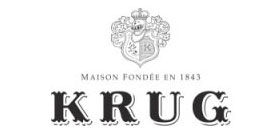
What's The History of Krug
Krug, now part of the luxury brand stable of LVMH, has an uncompromising position in terms of quality and level of prestige, positioned above Dom Perignon and other top cuvees in terms of price, but with a strong, and unwavering following, making it one of the top 3 super premium Champagne brands in the world.
Krug is a relative youngster, in terms of Champagne brands, having been set up in 1843, by Johann-Joseph Krug, who emigrated from Germany, and joined many of his compatriots in the Champagne region. The majority of the big Champagne names had been set up just under a century before this. Truly believing in the destiny of the Krug brand, Johann-Joseph, set out his vision and the philosophy for the brand, in a leather-bound, cherry red notebook, which now takes pride of place in the company’s headquarters in Reims.
Johann-Joseph had learnt his craft at Jacquesson Champagne, and in the mid 19th century, then began to build the legacy and unique creation that is Krug. The business was handed down to his son, then to his grandson. Three generations on, his great-great grandson took over the running of the business, and was largely responsible for creating the unique style of Krug Champagne, which is much sought after today.
In 1962, still firmly under family control, two of the most iconic names in the Champagne industry took over the helm – the world renowned, Henri and Remy Krug. Henri has been the visionary behind the winemaking, with Remy, responsible for the marketing and promotion of the brand all over the world – a true brand ambassador.
Krug has maintained its style traditions, and today makes all its Champagne from a combination of the vineyards across the 20 hectares of vineyards that the company owns, and long established contracts with some of the top quality grape growers in the region. Krug produces wines and blends wines, which express the uniqueness of each vineyard and location, in its different guises.
The most unique Krug tradition is the primary fermentation of all wines in small 225lts oak barriques, to give the Champagnes, their rich intensity, longevity and idiosynchratic style. This is highly unusual in Champagne. The majority of the wines are also stored on lees, to increase complexity and are aged for around 6 years.
Krug is unique amongst Champagnes; as well as being one of the most prestigious and sought after Champagnes, it is the only Champagne to ferment all of its wines in oak barrels and age them for a minimum of 6 years, thus creating a highly distinctive, recognisable and much-desired style of Champagne. Krug, with its characteristic wide bottomed bottle, with narrow top, has the reputation of being the ultimate super-premium Champagne for discerning Champagne drinkers; it shouts less than its fellow ‘super prestige’ Champagne brands, and bears the hallmarks of sophistication, style and uniqueness, attributes, which have been carefully nurtured and developed over the years.
What Styles of Champagne Does Krug Make?
Krug produces only ‘prestige cuvees’, although the majority of these are non-vintage. The Krug house states openly that their wines are not NV, but instead ‘multi vintage’, with selections for their entry level, at super premium level, and using mainly grapes from Premier and Grand cru vineyards. The oak ageing and extended lees contact also mark the brand out as different and unique.
The Krug ‘Grande Cuvee’, stands head and shoulders above most brands’ ‘prestige cuvee’, and in terms of pricing, commands a higher price than the majority of other prestige Champagnes, including Dom Perignon, Veuve Clicquot La Grande Dame, and Taittinger Comtes de Champagne.
Krug offers 5 prestige cuvees, all different, all remarkable, and all encapsulating the style and quality from the individual grapes and vineyards from which they are made.
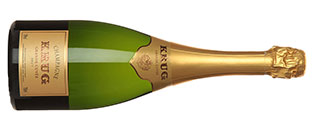
Krug Grande Cuvee – it’s almost tongue in cheek to say that this is Krug’s entry level, since it commands higher premiums and more respect than most prestige cuvees and other grande marques vintages. It’s a blend of over 120 wines, covering 10 or more vintages, some of them up to 15 years in age, something totally unique. Chardonnay is the dominant grape in the blend, adding to the softness, elegance and style. The blends are then aged for over 6 years, giving a unique, complexity, richness and style.
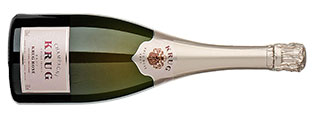
Krug Rose – like the Grande Cuvee, this wine is produced from a wide range of wines, and vintages, and is the only Rose to be made from a blend of all 3 main Champagne grape varieties, from such a broad variety of vintages, with the Pinot being fermented on its skins to provide the rich, bold colour of the wine. Structured, complex and in a similar style to the Grande Cuvee.
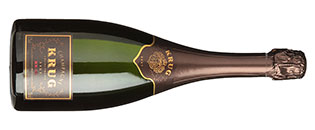
Krug Vintage - a unique Champagne, from a unique house, who have crafted their vintage Champagnes lovingly and only in the very best years, from the most premium of vineyards. The 2000 vintage is described as ‘rich, complex, powerful and enduring’. A sublime, exquisite and rare expression of this prestige brand.
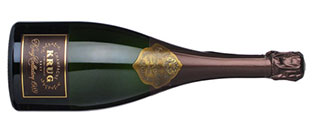
Krug Collection – a unique collection of vintage wines, which have been held back, stored lovingly in the Krug cellars and which have then re-emerged, with all the benefit of ageing and time, which makes these rare wines totally unique, and simply incredibly complex. 1989 is the latest of the collection wines released.
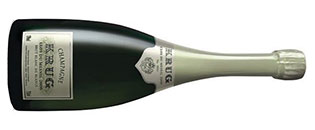
Krug Clos du Mesnil vintage - this is a truly unique and rare ‘blanc de blancs’ Champagne, produced from 100% Chardonnay grapes, from one single year, from a single, tiny 2 hectare vineyard, ‘Le Mesnil’, in the village of Mesnil-sur-Oger. With over 10 years cellaring, this is a Champagne of true finesse.
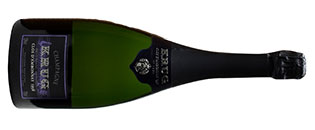
Krug Clos d’Ambonnay – probably the pinnacle of the Krug ladder of superlative quality - another unique and rare Champagne, but this time a ‘blancs de noirs’, produced entirely from the fleshy Pinot Noir grapes, from a tiny 0.8 hectare plot, one of the most prized in the region. The wine is aged for 12 years before release and is truly sumptuous in its intensity and complexity.